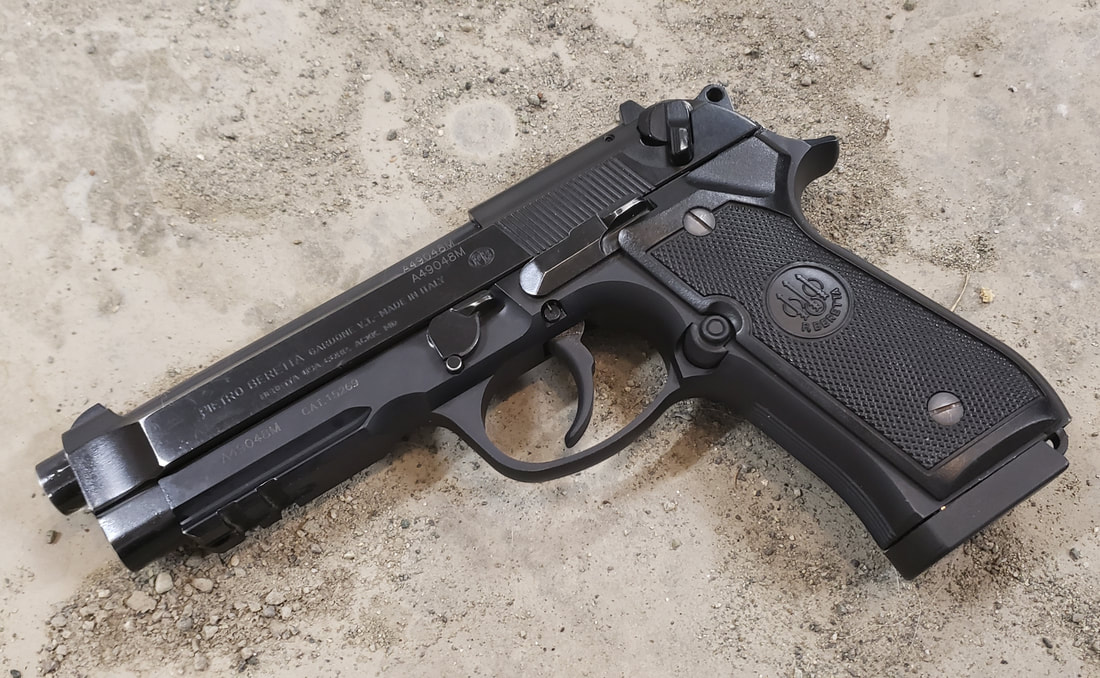However, this is proven to be untrue when testing through barriers and testing loads on an apples to apples basis with the same barrel length and comparable projectile weight such as a 124gr 9mm to a 165gr .40 caliber. Needless to say that I enjoy the ballistics of the .40 caliber and I think it offers enough of an advantage for me to the point that I am willing to make certain sacrifices.
As far as the Beretta 96A1 is concerned, it has a barrel length of almost 5 inches, which makes it almost perfect for firing the 180 grain projectiles. Bullets being velocity based means that the heavy 180 grain projectiles can use all the help they can get. With this pistol, pretty much every 180 grain projectile should have better expansion and penetration. This is not guaranteed, but I think that it is safe to say that sticking to 180 grain self defense loads with this pistol will get you the best performance instead of going lighter and faster.
This piece can come out when you remove the takedown system, and can be replaced. This piece is supposed to prevent the slide from doing as much damage to the frame and itself as it was doing in the original 96 series. Think of it as a sacrificial piece that is there to prevent the fun times from stopping too soon. Pretty nice of Beretta to be so considerate, huh?
When talking to a Beretta representative, I was told that the 96A1 was specifically modified to withstand the .40 caliber by ways of thickening certain parts like the front of the slide and the breechface, while the locking block is the same as the one you see on the 9mm pistols. Also, apparently the heavier springs and weights of the pistol components all help the locking block maintain a cozy service life matching what the 9mm would have. However, regularly replacing the recoil spring is the suggestion in order to save the locking block long term. Roughly every 5,000 rounds is the quote I was given.
So, it seems that Beretta is pretty confident that this pistol is an outstanding advancement in terms of a pistol that is built to handle the .40 caliber pressures with ease. It may be light, but the pistol seems to be well engineered from the start. I will have to see if the claims of longevity are really true. Thankfully the parts for the pistol are not too expensive.
Minor differences such as the magazine capacity being only 12 rounds are considered to be the downfall of this design. This is one part that I think people get a little too bent out of shape about. The standard comeback that no one wants less bullets makes little sense in a world where reloading a semi-automatic is a task that takes seconds rather than minutes. Once you get above 10 rounds in a magazine, I think the argument of capacity is kinda ridiculous. Are we going to have the same argument with people carrying a Bond Arms Derringer? I doubt it. How about someone carrying 6 rounds in a Kahr CM9? Nope. Of course I am not saying to only load 5 in a magazine that holds over 10, but I am saying that when the difference is one or two or three rounds, I fail to see what all the bitching is about. It seems that little thought goes into the argument and insecurity from inexperience takes over. Don't be that guy that gets soaked into the argument.

 RSS Feed
RSS Feed